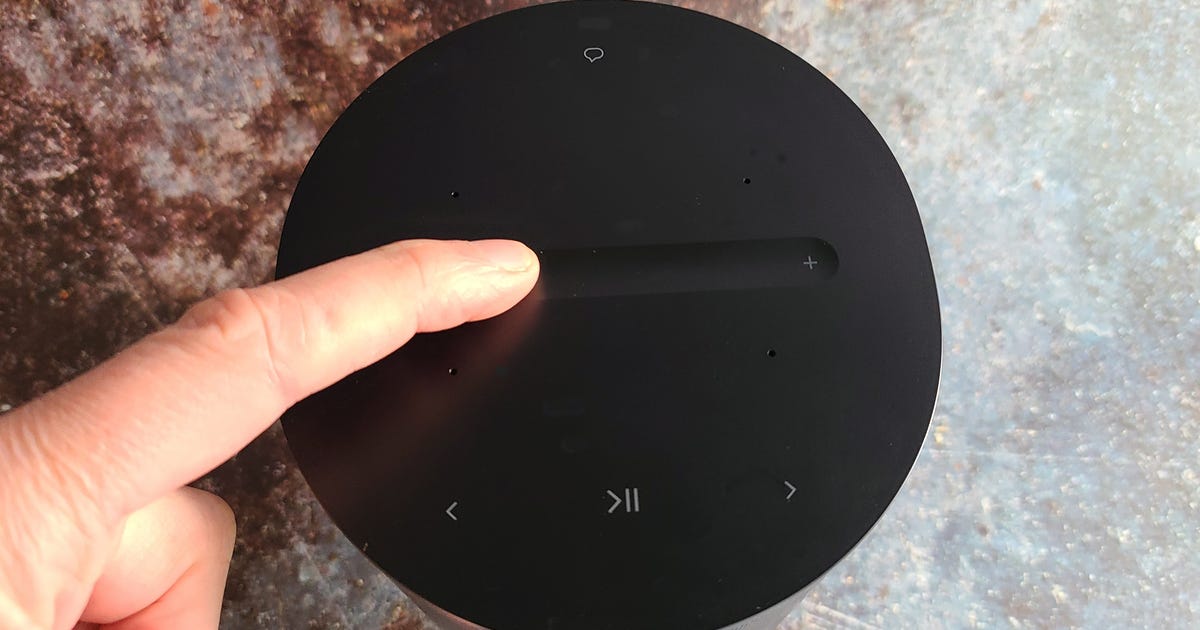Longtime CNET readers know that we’ve always liked Harmony remotes (even in the days before the original Canadian company, Intrigue Technologies, was purchased by Logitech). Harmony models pioneered the idea of “Web-programmable” consumer electronics: tell the software which products you own and how they’re connected, and the software uploads all of the codes to the remote, preprogrammed into task-based activities such as “Watch TV,” “Watch a movie,” “Listen to music,” and so forth.
As of now, however, the lineup of Harmony remotes is arguably as good — and as affordable — as it’s ever been. But with eight current models (and several more older ones that are still available through various retailers), distinguishing among them can be a bit confusing. So we decided to create this cheat sheet to make choosing as easy as possible:
<!–
table.geekbox th{background-color:#E6ECEF;text-align:left;font-weight:bold;}
table.geekbox tr.even{background-color:#CCCCCC;}
.ratingGood{color:#093;} .ratingAverage{color:#666;} .ratingBad{color:#C00;}
| Model | Devicescontrolled | Controlcompatibility | LCDscreen? | Rechargeableoption? | Supportscustomsequences? | Streetprice |
|---|---|---|---|---|---|---|
| Harmony 200 | 3 | IR | None | None* | No | $20 |
| Harmony 300/300i | 4 | IR | None | None* | No | $30 |
| Harmony 650 | 5 | IR | Color | None* | TK | $50 to $60 |
| Harmony 700 | 6 | IR | Color | Yes (USB) | TK | $90 |
| Harmony One | 15 | IR | Colortouch-screen | Yes (cradle) | Yes | $140 to $180 |
| Harmony 900 | 15 | IR + RF | Colortouch-screen | Yes (cradle) | No | $240 to $350 |
| Harmony 1100 | 15 | IR + RF | Tablet-style color touch screen | Yes (cradle) | No | $260 to $350 |
| Harmony Link | 8 | IR | Uses phone ortablet screen | Yes (cradle) | No | $100 |
–>
Harmony tips
Some tips for choosing the Harmony that’s best for you:
Start by determining how many products you’ll need to control. If you’ve got six devices, don’t get one of the remotes that only controls five or fewer. And remember that Harmony remotes should be able to replace any infrared-based remotes, including those for ceiling fans.
The actual price may be lower than the suggested retail price. Even if the list price is too steep for you, be sure to click through and check the retail price. It’s often lower — sometimes significantly so.
RF compatibility is a great upgrade — but be prepared to pay for it. Control compatibility refers to infrared (IR) or radio frequency (RF). Every product you own (with the notable exception of the PlayStation 3 — see below) almost certainly uses IR control, but that requires line of sight to the product’s IR receiver. If you want to hide your home theater gear in a cabinet, you’ll want to invest in one of the RF models, which include RF-to-IR blasters (small accessories that convert the radio commands — which work through obstructions — to the IR emitters that are in turn placed near the receiving devices).
If detailed, multistep custom macros are important to you, a Harmony model probably isn’t the best choice. A small group of advanced users values the ability to program custom multidevice macros, to do things like raise the lights when putting a movie on pause. They’ve been extremely frustrated to find that Logitech’s most advanced and expensive models don’t support them (the Harmony One is pretty much the only one left that does). Logitech calls macros “sequences,” but the cheaper remotes only support sequences of five steps — not enough to do extensive programming. We think 95 percent of the audience won’t find this to be a problem, but that a passionate 5 percent of advanced users will probably want to look elsewhere. Models from URC and Acoustic Research are a good start.
The Harmony Adapter for PlayStation 3 is a must for PS3 owners. For reasons known only to Sony, the PS3 does not have an IR port, so it can’t be controlled by regular universal remotes. Thankfully, Logitech makes this accessory, which converts IR commands to PS3-friendly Bluetooth. Yes, it’s annoying that you need to pay an extra $50 to $60 for this, but it works flawlessly.
Feel free to buy your own rechargeable batteries. None of the sub-$100 remotes includes rechargeable batteries. If that’s important to you, you can always invest in two pairs of your own rechargeable batteries, and swap them in and out as needed.
Bare-bones Harmony models are now available for $20 to $30. Once upon a time, Harmony prices started at $60 or above — but no longer. The Harmony 200 and Harmony 300 can be had for no more than $20 or $30, respectively. That said, these models control only three or four products, and are best for simple bedroom or den systems, not big living room home theaters with AV receivers or more than four devices.
Don’t think $100 is too much to spend for a remote. Yes, it looks like a lot of money. It is a lot of money, especially when you’ve been used to picking up “universal remotes” at the drug store for $20. But trust us: even the midlevel Harmony models are a great investment that are well worth their purchase price.
The software will still frustrate newbies and non-techies. The latest version of Logitech’s software is much improved over earlier versions, but — as good as it is — it can still frustrate those who aren’t techies. And there’s definitely some trial and error involved when setting up a Harmony, even if the process is completely smooth. If you’re buying one of these as a gift for a non-geek, you might need to volunteer to help set it up. (For more Harmony frustrations and suggestions, see “Five ways Logitech can improve Harmony remotes.”)
Best bets


CNET
Best bang for your universal remote buck: Harmony 650/700: These two models share nearly identical designs, with just very tiny feature differences. They’re separated in price by as little as $30. If you’re not ready to make the leap to the Harmony One, either of these will be an ideal living-room remote for most people. (The Harmony 600 is now discontinued, but you might be able to find it at a closeout price at some retailers.)
Read the full review of the Logitech Harmony 650.
Read the full review of the Logitech Harmony 700.
Best RF remotes: Harmony One/900: In 2008, we called the Harmony One “one of the best — if not the best — universal remote we’ve ever tested.” That description still stands. If you need to control more than six devices — and you can spend upwards of $150 on a remote — the Harmony One is the one to get. Go for the 900 if you need RF support (and can live without custom sequences).
Read the full review of the Logitech Harmony One.
Read the full review of the Logitech Harmony 900.


Logitech
Best bargain remotes: Harmony 200/300: These are Logitech’s more recent entry-level remotes. They have no LCD and lack most of the task-based commands found on all other Harmony remotes, but they’re available for as little as $20.
Read the full review of the Logitech Harmony 200.
Read the full review of the Logitech Harmony 300.
Other models
Harmony 1100: Personally, I’ve never been a fan of the tablet design for remotes. The 900’s hard keys plus small touch-screen design is a better design, in my opinion. But the tablet-style touch-screen design has a lot of fans. Those folks should check out the Logitech Harmony 1100.
Read the full review of the Logitech Harmony 1100.
Harmony Link: It sounds like a great idea: use your iPad, iPhone, iPod Touch, or Android phone as a touch-screen remote. And, indeed, the Harmony Link (which converts commands via Wi-Fi from a free Harmony app to IR commands that your TV, game console, or stereo can understand) works as promised. But again, you’re stuck with a touch-screen interface, which is better in theory than in practice. But the bigger problem may be that the iPad app’s built-in TV programming guide isn’t as robust as some of the similar free apps you can get from cable and satellite providers.
Read the full review of the Logitech Harmony Link.
What’s your favorite Harmony universal remote? Have you had good experiences or bad? Or do you prefer a Harmony competitor? Share your thoughts below.
Editors’ note: This story was originally posted on May 28, 2010, but has since been updated.




